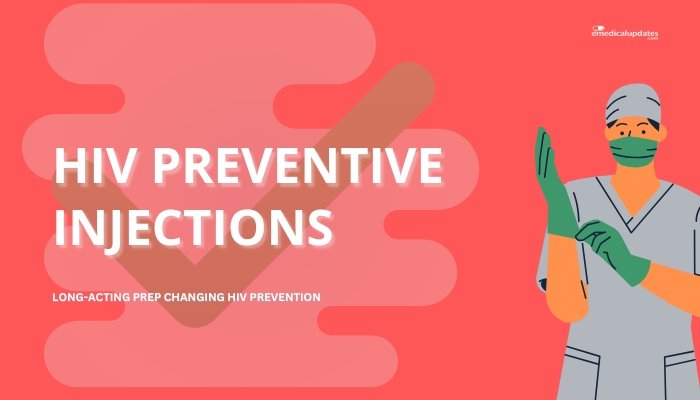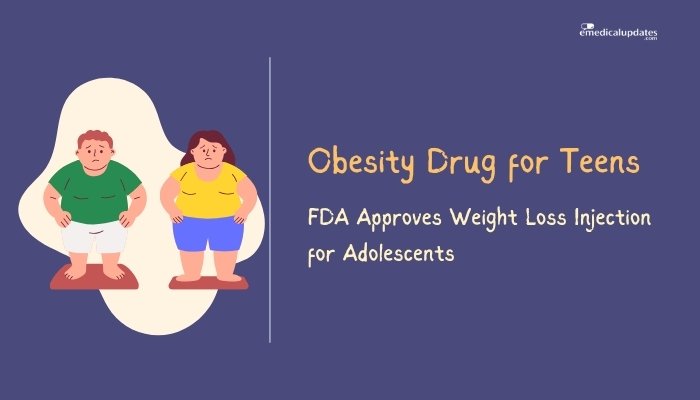Introduction
Pre-exposure prophylaxis (PrEP) has revolutionized HIV prevention by allowing HIV-negative individuals to protect themselves daily with antiretroviral medication. Yet, daily pills can be cumbersome or stigmatizing for some, and inconsistent adherence undermines efficacy.
Enter long-acting PrEP injections, a fresh approach that could simplify prophylaxis by providing sustained drug levels for weeks or months. With promising data supporting their robust protection, these new injections have started to reshape how we think about HIV prevention—particularly for groups who struggle with daily pills or prefer a more private regimen.
This article explores how long-acting PrEP works, the key studies that established its effectiveness, challenges in rolling it out, and what this innovation means for global HIV prevention efforts.
Limitations of Traditional PrEP
Daily Pills and Adherence Issues
- Consistency: Oral PrEP (e.g., tenofovir/emtricitabine) can be highly effective if taken daily. But missing doses weakens protection.
- Stigma and Privacy: Some individuals fear partner or community judgment if spotted with daily HIV meds.
- Access and Distribution: Clinics and pharmacies must maintain supply, and patients need regular refills, which can be logistically difficult in certain settings.
Importance of Long-Acting Solutions
To overcome adherence barriers, researchers sought methods that reduce dosing frequency, improving continuous coverage without daily reminders or potential daily pill fatigue. A monthly or bimonthly shot can drastically simplify prevention routines, especially for those at high ongoing risk.
What Is Long-Acting Injectable PrEP?
The Drug Behind the Injection
Cabotegravir (CAB-LA) is a long-acting integrase inhibitor that can remain in muscle tissue for extended periods. After an initial oral lead-in, patients transition to intramuscular injections every 8 weeks (or monthly, depending on the regimen). Over that time, the drug’s concentration remains sufficient to prevent HIV from establishing an infection.
Mechanism of Action
Like other integrase strand transfer inhibitors, cabotegravir blocks the HIV integrase enzyme, stopping viral DNA from integrating into host cells. For a negative individual, circulating integrase inhibitors can prevent HIV replication soon after exposure, effectively neutralizing the virus before it gains a foothold.
Advantages
- Reduced Daily Burden: No more daily pills—just clinic visits for injections.
- Stealth and Privacy: Eliminates the risk of pill bottles or daily pill-taking routines that could reveal HIV prevention status.
- High Consistency: Once injected, therapeutic levels are maintained automatically between clinic appointments.
Clinical Evidence and Effectiveness
Landmark Trials
Two main phase III trials stand out:
- HPTN 083: In men who have sex with men and transgender women, long-acting cabotegravir injections outperformed daily oral PrEP in preventing HIV infection.
- HPTN 084: In cisgender women at risk for HIV, injection-based prophylaxis also demonstrated superior efficacy or non-inferiority compared to daily oral PrEP.
Efficacy Highlights
- Reduced HIV Incidence: Significantly lower rates of new HIV infections among injection participants than those on daily pills.
- Comparable Safety: The main side effects reported were injection-site pain or reactions, typically mild. Rare events include potential allergic responses or injection complications.
Approval and Recommendations
Regulatory bodies in various countries, including the U.S. FDA, have approved long-acting cabotegravir for HIV prevention. Global health agencies are working on updated guidelines to incorporate injection-based PrEP into standard prevention strategies.
Practical Considerations and Challenges
Accessibility and Cost
- Clinic Visits: Patients require an injection by a healthcare provider every 1–2 months. This can be challenging in rural or low-resource areas with fewer healthcare professionals or higher transport costs.
- Medication Price: As a novel therapy, it may be expensive. Insurance coverage, government subsidies, or global health initiatives must address affordability.
- Distribution Infrastructure: Storage requirements (e.g., refrigeration) and supply chain reliability remain vital, particularly in areas with limited medical infrastructure.
Adherence to Clinic Appointments
While patients escape daily pill-taking, they must keep injection appointments. Missing an injection can create vulnerability to HIV infection. Implementing flexible scheduling, digital reminders, and supportive outreach are essential to maintain coverage.
Potential Resistance Issues
If a person acquires HIV while on the long-acting drug but misses an injection or has subtherapeutic levels, integrase inhibitor resistance can develop. Thorough HIV testing before each injection appointment helps detect breakthrough infections early.
Future Directions
More Formulations
Other pipeline candidates:
- Islatravir: A potent nucleoside reverse transcriptase translocation inhibitor with potential for long-acting formulations.
- Multidrug Injection Combos: Could add additional protective layers or reduce the chance of resistance.
Expanding Population Reach
- Younger Patients: Considering older adolescents or younger at-risk individuals to stop HIV earlier.
- Women in High-Prevalence Regions: Empowering them with long-acting prophylaxis.
- Global Rollout: Partnerships with local health systems, NGOs, and philanthropic foundations can drive broad adoption in regions facing HIV epidemics.
Integration with Other Prevention Tools
Long-acting PrEP complements other prevention measures:
- Condom Use: Remains crucial for broader sexual health and preventing other STIs.
- Behavioral Interventions: Education, counseling, and harm reduction remain essential in comprehensive HIV prevention programs.
Frequently Asked Questions
- Does long-acting injectable PrEP eliminate the need for condoms?
- No. It greatly reduces HIV risk but does not protect against other STIs or unplanned pregnancy.
- How often are the injections?
- Typically, after an oral lead-in, shots occur every 2 months, though schedules can vary.
- Are side effects worse than pills?
- Main complaints relate to injection-site pain. Systemic side effects are similar to oral PrEP. Most find it manageable.
- Who should consider it?
- Anyone at sustained risk for HIV who prefers not to take a daily pill or struggles with adherence. Healthcare providers can guide best options.
- Will it be widely available soon?
- Availability is growing in higher-income countries. Wider adoption in resource-limited areas depends on cost, supply, and healthcare capacity expansions.
Conclusion
Long-acting injectable PrEP marks a pivotal step in HIV prevention, simplifying prophylaxis by shifting from daily pill routines to infrequent but highly effective injections. Studies show that these injections outperform or match oral PrEP in preventing HIV among diverse populations, making them a vital new tool in the global fight against the virus. Nonetheless, success depends on patient follow-through with clinic visits and robust health infrastructures that can handle distribution, pricing, and potential side effects.
As we move into an era of sustained medication coverage, the convenience and discreetness of injections may encourage broader uptake—especially among groups that find daily pill-taking burdensome or stigmatizing. If integrated properly into comprehensive prevention strategies—alongside condoms, testing, and behavioral support—long-acting injections can accelerate the push toward ending HIV transmission. The path forward involves addressing cost barriers, refining guidelines for widespread rollout, and ensuring equal access to this promising innovation.
References
-
- HPTN 083 and 084 Trials. (2021). “Long-acting injectable cabotegravir for HIV prevention.”
-
- FDA. (2021). “Approval of cabotegravir for PrEP.”
-
- World Health Organization (WHO). (2022). “Guidelines on long-acting PrEP for HIV prevention.”
-
- Baeten JM, et al. (2022). “Novel and long-acting prevention strategies: Expanding HIV prophylaxis toolkits.” Lancet HIV.





